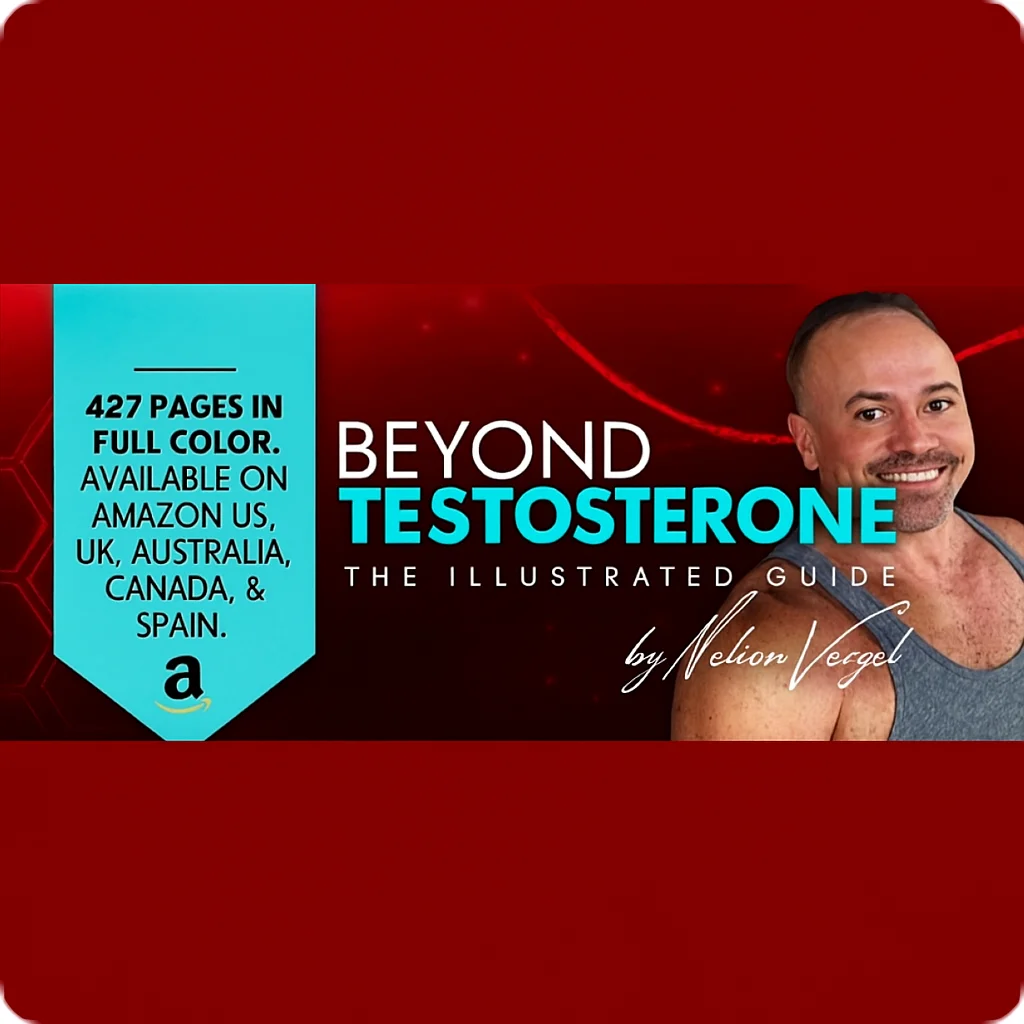Fernando Almaguer
Well-Known Member
This guys channel is fascinating. N of 1 type experimentation with diet to see how blood markers correlate with increase or decrease of certain foods. He has great guests as well.
This lecture explores immune resilience, a crucial factor for health and longevity that counteracts inflammaging, immune aging, and cellular senescence. Dr. Sunil Ahuja discusses his lab's 15-year work on this concept, emphasizing the importance of focusing on salutogenesis (promoting health) rather than just pathogenesis (disease). The research introduces immune health grades and transcriptional metrics (SAS1 and MAS1) to quantify immune resilience, demonstrating their association with superior health outcomes and longevity across diverse human populations and inflammatory stresses like aging, infections, and cancer. The discussion highlights the TCF7 transcription factor as a key component of optimal immune resilience and explores the complex interplay of immune competence and inflammation in maintaining health, suggesting that personalized approaches based on individual immune profiles are essential for effective healthcare.
Immune Resilience: The Hidden Key to Healthy Aging and Longevity
Introduction
In a wide‑ranging discussion, Dr. Sanjay Ahuja — professor of medicine, microbiology, immunology, and biochemistry at the University of Texas Health Science Center at San Antonio — detailed over 15 years of research into immune resilience. This concept, he argues, may be one of the strongest determinants of why some people stay healthy longer, resist infections, and age more gracefully.
Instead of focusing solely on pathology, Ahuja studies the forces that promote health — what he calls salutogenesis. His work suggests that maintaining immune resilience can counteract the “pathogenic triad” of inflammaging, immune aging, and cellular senescence, delaying disease onset and extending healthy years of life.
The Three Forces Shaping Our Healthspan
Ahuja frames the human lifespan as a balance of three concurrent forces:
Salutogenesis – the proactive maintenance of health (not merely the absence of disease).
Pathogenesis – processes that cause disease.
Biology of Aging – inevitable physiological decline over time.
While aging cannot be stopped, the other two forces can be influenced by genes, environment, and lifestyle.
What is Immune Resilience?
Dr. Ahuja defines immune resilience as:
The capacity to preserve and/or rapidly restore immune competence while keeping inflammation appropriately low during immune stress.
It is not a baseline trait — much like emotional resilience, it becomes evident only under stress. This resilience has two measurable components:
Immune competence — the ability to fight infections and respond to vaccines.
Controlled inflammation — the presence of protective, time‑limited inflammation without chronic excess.
Measuring Immune Health: The IHG System
To quantify immune resilience, Ahuja’s team developed Immune Health Grades (IHG) based on CD4 and CD8 T‑cell counts:
Grade 1 (Optimal) — CD4 ≥ 800 and CD4:CD8 ratio ≥ 1
Grades 2–4 — varying combinations of lower CD4 counts and/or inverted CD4:CD8 ratios, indicating diminished resilience.
A grade 1 profile is linked to:
Better survival in aging cohorts.
Milder COVID‑19 outcomes.
Stronger vaccine responses.
Lower inflammatory markers like CRP and IL‑6.
Notably, women are more likely than men to maintain Grade 1 across their lifespans.
Antigenic Load: The Erosion Factor
Over a lifetime, exposure to microbes, allergens, trauma, and other antigenic stimuli progressively erodes immune resilience.
Dr. Ahuja uses diverse “model systems” to study this process:
Age as a proxy for cumulative antigenic exposure.
High‑exposure occupations (e.g., Kenyan sex workers) to observe resilience under repeated infectious challenge.
Chronic infections like HIV and schistosomiasis.
Acute pandemics like COVID‑19.
Each model shows the same pattern: those who preserve IHG‑1 despite stress have superior outcomes.
Beyond Cells: The SAS–MAS Gene Signatures
In addition to immune cell metrics, his group created transcriptional “signatures” to assess resilience:
SAS‑1 — genes associated with survival (immune competence).
MAS‑1 — genes associated with mortality (inflammation).
Double good (high SAS, low MAS) aligns strongly with IHG‑1 and predicts longer survival, even in long‑term cohorts like the Framingham Heart Study.
TCF7: A Master Regulator
One standout finding is the transcription factor TCF7, critical for preserving T‑cell “naïvety” and immune competence.
High TCF7 expression is tightly linked to:
High SAS / low MAS profile.
Lower inflammation and senescence markers.
Better outcomes in infections, cancer risk, and Alzheimer’s.
This relationship holds regardless of chronological age — meaning that preserving immune resilience is not purely about slowing the “rate” of aging.
Why Longevity Advantage Fades
While optimal immune resilience confers a survival advantage — in some cohorts up to 15 extra healthy years — Ahuja notes that the benefit eventually converges with the less resilient group. This “warranty window” reflects that antigenic load, like mechanical wear‑and‑tear, cannot be offset indefinitely.
Can We Boost Immune Resilience?
Dr. Ahuja is cautious: reversing age‑related decline is far harder than preventing it in the first place. Still, some strategies can improve or preserve immune health grades:
Treat underlying disease before it silently degrades immune profile.
Reduce ongoing antigenic load (infection control, vaccination, gut health).
Lifestyle changes — exercise and diet can shift SAS/MAS favorably, though benefits may wane if the intervention stops.
Mind–Brain–Immune axis — mindfulness and stress management may positively influence immunity, an area he calls “the next frontier.”
Microbiome modulation — dietary shifts that adjust gut flora could indirectly boost immune competence.
Key Takeaways
Immune resilience — maintaining high immune competence and low chronic inflammation during stress — is a strong predictor of healthspan and survival.
Measurable biomarkers like IHG, SAS/MAS, and TCF7 open a pathway for personalized immune health monitoring.
Preserving resilience is easier than regaining it; early‑life advantages matter.
Eventually, biological aging prevails, but delaying the decline can yield many extra years of healthy life.
The brain–immune connection and microbiome manipulation are promising (and under‑explored) levers.
Final Word
Dr. Ahuja’s research suggests that the immune system is not merely a defender against disease — it is a master regulator of how we age. Measuring, maintaining, and personalizing interventions for immune resilience could become a cornerstone of future longevity medicine.
This lecture explores immune resilience, a crucial factor for health and longevity that counteracts inflammaging, immune aging, and cellular senescence. Dr. Sunil Ahuja discusses his lab's 15-year work on this concept, emphasizing the importance of focusing on salutogenesis (promoting health) rather than just pathogenesis (disease). The research introduces immune health grades and transcriptional metrics (SAS1 and MAS1) to quantify immune resilience, demonstrating their association with superior health outcomes and longevity across diverse human populations and inflammatory stresses like aging, infections, and cancer. The discussion highlights the TCF7 transcription factor as a key component of optimal immune resilience and explores the complex interplay of immune competence and inflammation in maintaining health, suggesting that personalized approaches based on individual immune profiles are essential for effective healthcare.
Immune Resilience: The Hidden Key to Healthy Aging and Longevity
Introduction
In a wide‑ranging discussion, Dr. Sanjay Ahuja — professor of medicine, microbiology, immunology, and biochemistry at the University of Texas Health Science Center at San Antonio — detailed over 15 years of research into immune resilience. This concept, he argues, may be one of the strongest determinants of why some people stay healthy longer, resist infections, and age more gracefully.
Instead of focusing solely on pathology, Ahuja studies the forces that promote health — what he calls salutogenesis. His work suggests that maintaining immune resilience can counteract the “pathogenic triad” of inflammaging, immune aging, and cellular senescence, delaying disease onset and extending healthy years of life.
The Three Forces Shaping Our Healthspan
Ahuja frames the human lifespan as a balance of three concurrent forces:
Salutogenesis – the proactive maintenance of health (not merely the absence of disease).
Pathogenesis – processes that cause disease.
Biology of Aging – inevitable physiological decline over time.
While aging cannot be stopped, the other two forces can be influenced by genes, environment, and lifestyle.
What is Immune Resilience?
Dr. Ahuja defines immune resilience as:
The capacity to preserve and/or rapidly restore immune competence while keeping inflammation appropriately low during immune stress.
It is not a baseline trait — much like emotional resilience, it becomes evident only under stress. This resilience has two measurable components:
Immune competence — the ability to fight infections and respond to vaccines.
Controlled inflammation — the presence of protective, time‑limited inflammation without chronic excess.
Measuring Immune Health: The IHG System
To quantify immune resilience, Ahuja’s team developed Immune Health Grades (IHG) based on CD4 and CD8 T‑cell counts:
Grade 1 (Optimal) — CD4 ≥ 800 and CD4:CD8 ratio ≥ 1
Grades 2–4 — varying combinations of lower CD4 counts and/or inverted CD4:CD8 ratios, indicating diminished resilience.
A grade 1 profile is linked to:
Better survival in aging cohorts.
Milder COVID‑19 outcomes.
Stronger vaccine responses.
Lower inflammatory markers like CRP and IL‑6.
Notably, women are more likely than men to maintain Grade 1 across their lifespans.
Antigenic Load: The Erosion Factor
Over a lifetime, exposure to microbes, allergens, trauma, and other antigenic stimuli progressively erodes immune resilience.
Dr. Ahuja uses diverse “model systems” to study this process:
Age as a proxy for cumulative antigenic exposure.
High‑exposure occupations (e.g., Kenyan sex workers) to observe resilience under repeated infectious challenge.
Chronic infections like HIV and schistosomiasis.
Acute pandemics like COVID‑19.
Each model shows the same pattern: those who preserve IHG‑1 despite stress have superior outcomes.
Beyond Cells: The SAS–MAS Gene Signatures
In addition to immune cell metrics, his group created transcriptional “signatures” to assess resilience:
SAS‑1 — genes associated with survival (immune competence).
MAS‑1 — genes associated with mortality (inflammation).
Double good (high SAS, low MAS) aligns strongly with IHG‑1 and predicts longer survival, even in long‑term cohorts like the Framingham Heart Study.
TCF7: A Master Regulator
One standout finding is the transcription factor TCF7, critical for preserving T‑cell “naïvety” and immune competence.
High TCF7 expression is tightly linked to:
High SAS / low MAS profile.
Lower inflammation and senescence markers.
Better outcomes in infections, cancer risk, and Alzheimer’s.
This relationship holds regardless of chronological age — meaning that preserving immune resilience is not purely about slowing the “rate” of aging.
Why Longevity Advantage Fades
While optimal immune resilience confers a survival advantage — in some cohorts up to 15 extra healthy years — Ahuja notes that the benefit eventually converges with the less resilient group. This “warranty window” reflects that antigenic load, like mechanical wear‑and‑tear, cannot be offset indefinitely.
Can We Boost Immune Resilience?
Dr. Ahuja is cautious: reversing age‑related decline is far harder than preventing it in the first place. Still, some strategies can improve or preserve immune health grades:
Treat underlying disease before it silently degrades immune profile.
Reduce ongoing antigenic load (infection control, vaccination, gut health).
Lifestyle changes — exercise and diet can shift SAS/MAS favorably, though benefits may wane if the intervention stops.
Mind–Brain–Immune axis — mindfulness and stress management may positively influence immunity, an area he calls “the next frontier.”
Microbiome modulation — dietary shifts that adjust gut flora could indirectly boost immune competence.
Key Takeaways
Immune resilience — maintaining high immune competence and low chronic inflammation during stress — is a strong predictor of healthspan and survival.
Measurable biomarkers like IHG, SAS/MAS, and TCF7 open a pathway for personalized immune health monitoring.
Preserving resilience is easier than regaining it; early‑life advantages matter.
Eventually, biological aging prevails, but delaying the decline can yield many extra years of healthy life.
The brain–immune connection and microbiome manipulation are promising (and under‑explored) levers.
Final Word
Dr. Ahuja’s research suggests that the immune system is not merely a defender against disease — it is a master regulator of how we age. Measuring, maintaining, and personalizing interventions for immune resilience could become a cornerstone of future longevity medicine.
Last edited by a moderator:













